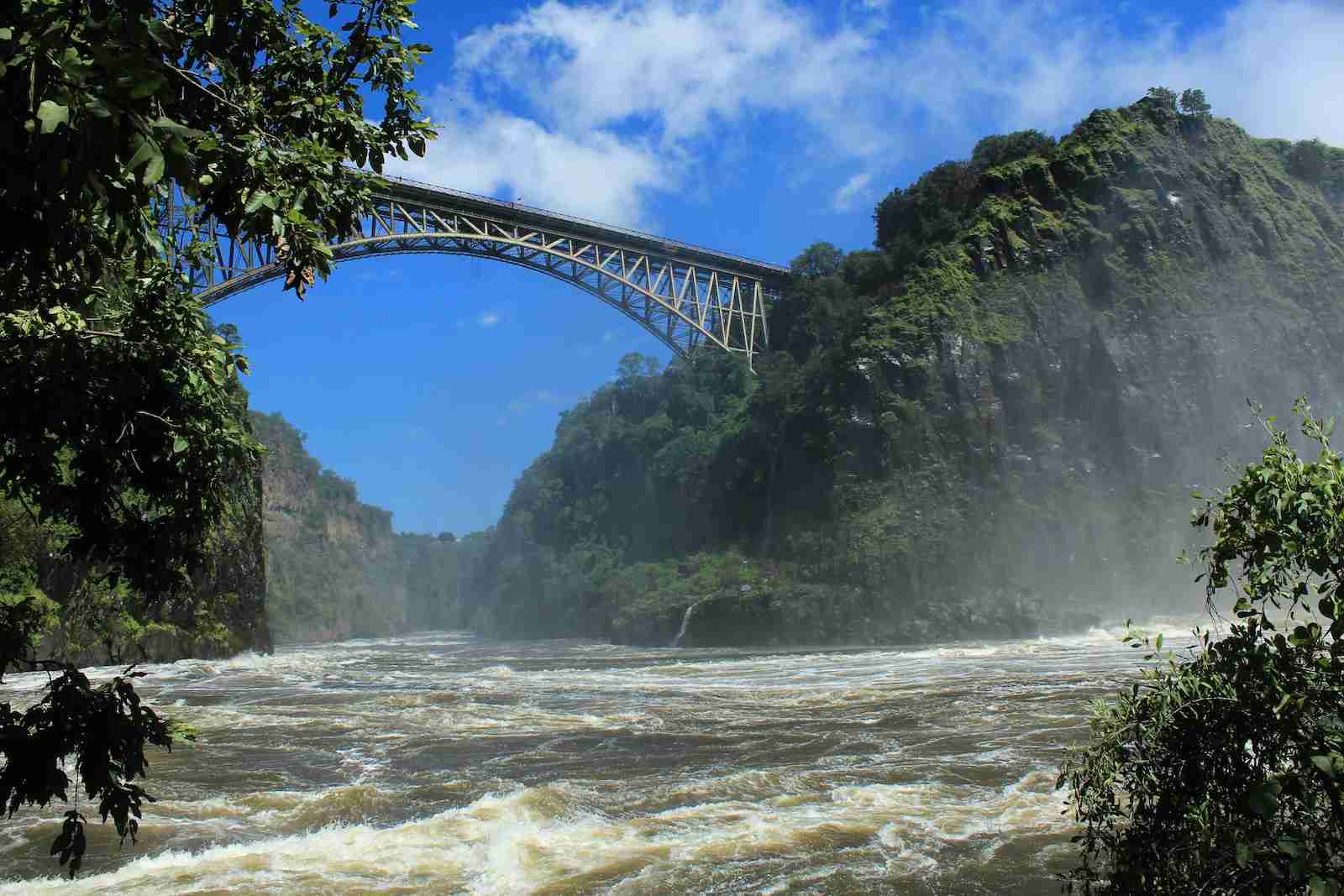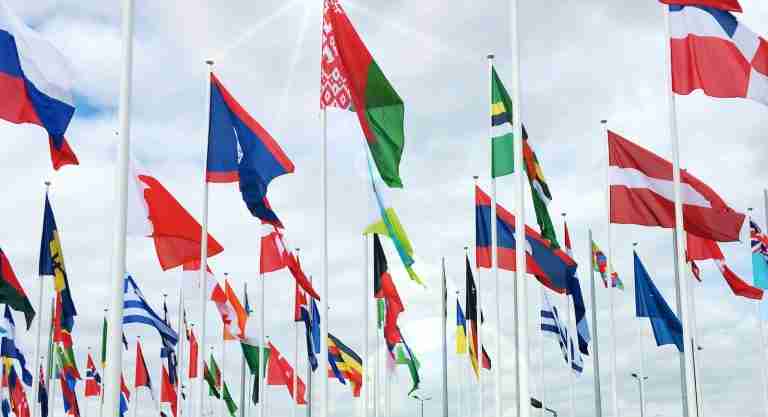26 Fun Facts About Zimbabwe: Marvel at Natural Splendors
1. Zimbabwe is in the southern part of Africa and it doesn’t have any coastlines.
Zimbabwe, a gem nestled in the heart of southern Africa, is truly a land of wonders, even without touching a coastline.
Covering a total area of 390,757 square kilometers, this vibrant country is a treasure trove of diverse landscapes from sun-kissed savannahs and serene wetlands to lush forests and towering mountains.
2. Zimbabwe was once known as Southern Rhodesia.
You’d be intrigued to learn that Zimbabwe carries a rich tapestry of history within its borders. It was once known as Southern Rhodesia – a chapter from its past that adds to its present-day charm and allure.
This transformation from Southern Rhodesia to the proud nation of Zimbabwe is a testament to its spirit of resilience and determination.
3. Zimbabwe means great stone houses when translated into Shona.
The name Zimbabwe carries a profound meaning in the local Shona language – great stone houses.
This speaks directly to the country’s remarkable architectural heritage, underlining a deep respect for craftsmanship that is so integral to Zimbabwe’s identity.
It’s like each stone whispers tales of the past, beckoning you closer to understanding Zimbabwe’s rich history.
4. Harare is the capital city of Zimbabwe.
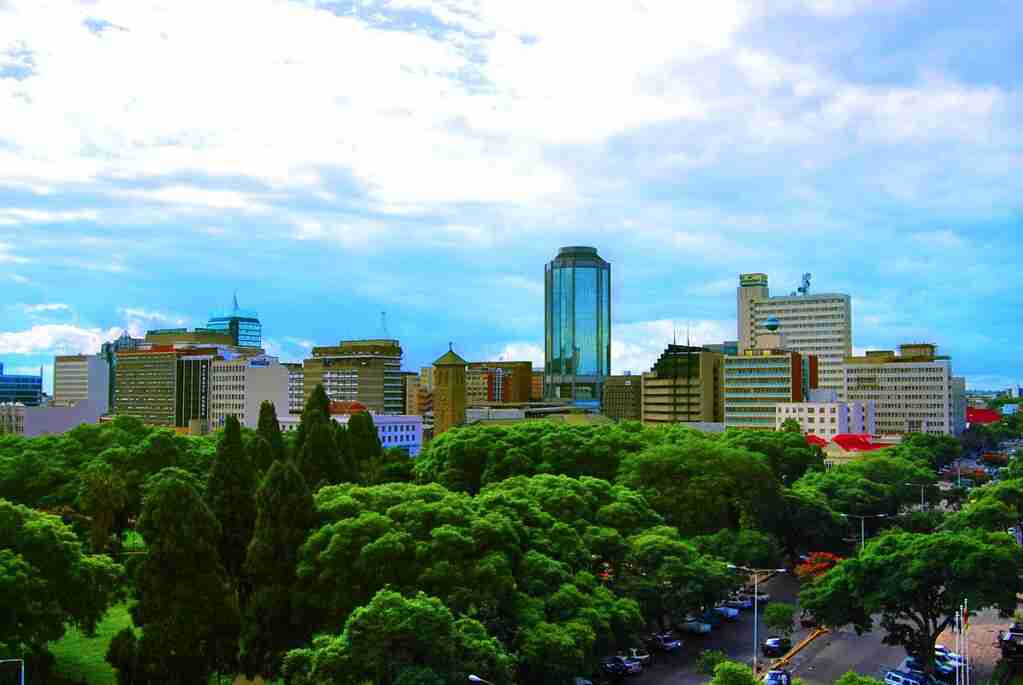
Harare, the vibrant capital of Zimbabwe, is an important hub of cultural, economic, and political activities.
Spread over a considerable area of approximately 872 square kilometers, the city accommodates an estimated population of around 1.6 million people.
5. Victoria Falls, one of the world’s largest waterfalls, resides in Zimbabwe.
Zimbabwe is the proud home of Victoria Falls, recognized as one of the world’s largest waterfalls.
Spanning a width of around 1,708 meters and a height of 108 meters, it is a majestic spectacle of nature’s power and beauty, attracting visitors from all corners of the globe.
6. Zimbabwe’s population is approximately 15 million.
The essence of Zimbabwe is its people. As of the latest estimates, the country is inhabited by approximately 15 million individuals.
Each one contributes to the nation’s rich tapestry of diverse cultures, traditions, and languages, making Zimbabwe a vibrant and welcoming nation.
7. On April 18, 1980, Zimbabwe celebrated its independence from British colonial rule.
One of the fun facts about Zimbabwe is that a monumental day in Zimbabwe’s history is April 18, 1980, when it triumphantly claimed its independence from British colonial rule.
This significant event marked the end of a roughly 90-year period of colonial governance, marking the birth of a new nation ready to carve its path.
8. The Sable Antelope is Zimbabwe’s national animal.
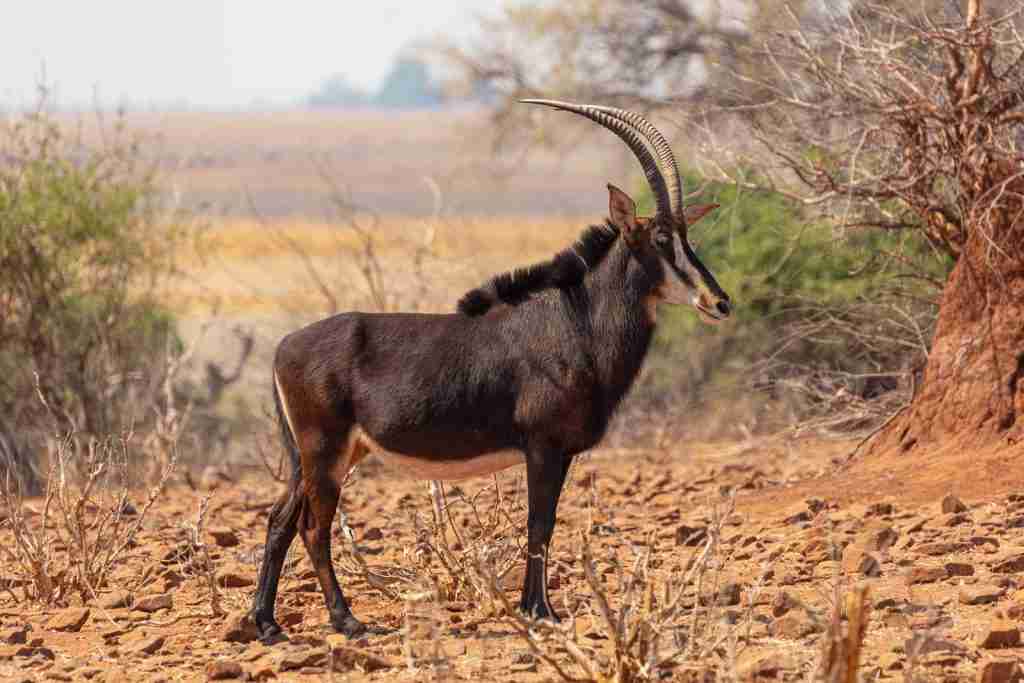
Zimbabwe’s national animal is the regal Sable Antelope, a majestic creature known for its impressive horns that can reach over 150 cm in males.
This choice symbolizes the nation’s commitment to preserving its diverse wildlife and the rich natural environments that Zimbabwe’s animals call home.
9. Lake Kariba, bordering Zambia, represents one of the world’s largest man-made lakes and lies in Zimbabwe.
The mighty Lake Kariba, on the border with Zambia, is a marvel of human ingenuity within Zimbabwe.
As one of the world’s largest man-made lakes, it covers an impressive area of 5,580 square kilometers, offering a breathtaking vista that stands as a testament to human ambition and nature’s grandeur.
10. More than 4,500 national monuments have their registration in Zimbabwe.
Zimbabwe takes immense pride in its history and cultural heritage, as evidenced by the registration of more than 4,500 national monuments within the country.
These monuments, each with its unique tale, paint a vibrant picture of the nation’s past and present, adding substantial depth to Zimbabwe’s rich cultural tapestry.
11. Zimbabwe boasts a high literacy rate of around 90%, one of the highest in Africa.
Zimbabwe’s commitment to education shines through its impressive literacy rate of approximately 90%, one of the highest in Africa.
This remarkable achievement reflects the country’s strong belief in the power of education as a tool for empowerment and progress, setting it apart on the continental stage.
12. Zimbabwe’s currency is the Zimbabwean dollar, reintroduced in 2019.
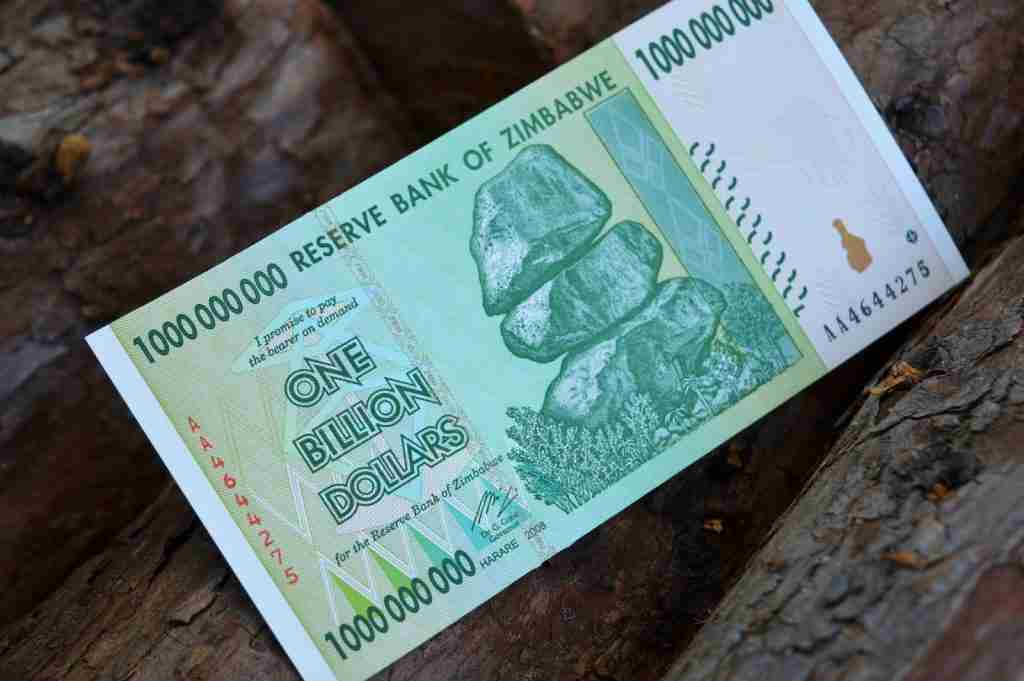
One of the fun facts about Zimbabwe is that the currency of Zimbabwe is the Zimbabwean dollar, reintroduced in 2019 after a period of economic turbulence.
This marked a significant step in the country’s journey towards economic stability and autonomy, echoing Zimbabwe’s resilience and determination to forge ahead, even in the face of challenges.
13. Zimbabwe once carried the title of the Breadbasket of Africa due to its extensive agricultural output.
Zimbabwe was once hailed as the Breadbasket of Africa, a testament to its robust agricultural sector.
The country was a prolific exporter of crops like tobacco, maize, and wheat. This agricultural prowess demonstrated Zimbabwe’s crucial role in sustaining the region and contributing to global food security.
14. Zimbabwe’s people are known worldwide for their hospitality and politeness.
The people of Zimbabwe are celebrated worldwide for their warm hospitality and polite demeanor. These qualities are integral to the nation’s identity, making every interaction in Zimbabwe a pleasant experience.
This reputation extends beyond their borders, placing Zimbabweans among the most gracious hosts in the world.
15. Zimbabwe shelters 11% of the world’s total elephant population.
A testament to Zimbabwe’s incredible biodiversity is that it’s home to 11% of the world’s total elephant population.
This fascinating fun fact about Zimbabwe emphasizes the country’s commitment to conservation and the vital role it plays in protecting these magnificent creatures, providing sanctuary to approximately 55,000 elephants, based on 2022 estimates.
16. In Zimbabwe, avoiding direct eye contact with elders is a respected custom.

In Zimbabwe, traditional customs hold great value. For instance, avoiding direct eye contact with elders is considered a sign of respect.
This practice, while may seem unusual to outsiders, reinforces the value Zimbabweans place on hierarchy and respect for elder wisdom, integral facets of the country’s rich cultural heritage.
17. Platinum, cotton, tobacco, gold, ferroalloys, and textiles are primary exports of Zimbabwe.
Zimbabwe boasts a vibrant export sector, with platinum, cotton, tobacco, gold, ferroalloys, and textiles leading the charge.
For example, Zimbabwe was the world’s sixth-largest producer of gold approximately 20 metric tons, and fifth-largest producer of lithium about 1,000 metric tons, demonstrating its significant role in the global economy, which is one of the fun facts about Zimbabwe.
18. The country has an incredible diversity of wildlife, making it a paradise for safari enthusiasts.
Zimbabwe is home to an extraordinarily diverse range of wildlife. It hosts hundreds of mammal species and over 670 bird species, making it an absolute paradise for safari enthusiasts.
This biodiversity makes Zimbabwe a top destination for anyone seeking authentic wildlife experiences.
19. Zimbabwe boasts five UNESCO World Heritage Sites.
Zimbabwe is home to five prestigious UNESCO World Heritage Sites, each offering a unique glimpse into the nation’s rich cultural and natural heritage.
These include the awe-inspiring Victoria Falls, the historical ruins of Great Zimbabwe, and the culturally significant rock art of Matobo Hills, among others.
20. Zimbabwe’s national flower, the Flame Lily, displays striking red or orange petals.
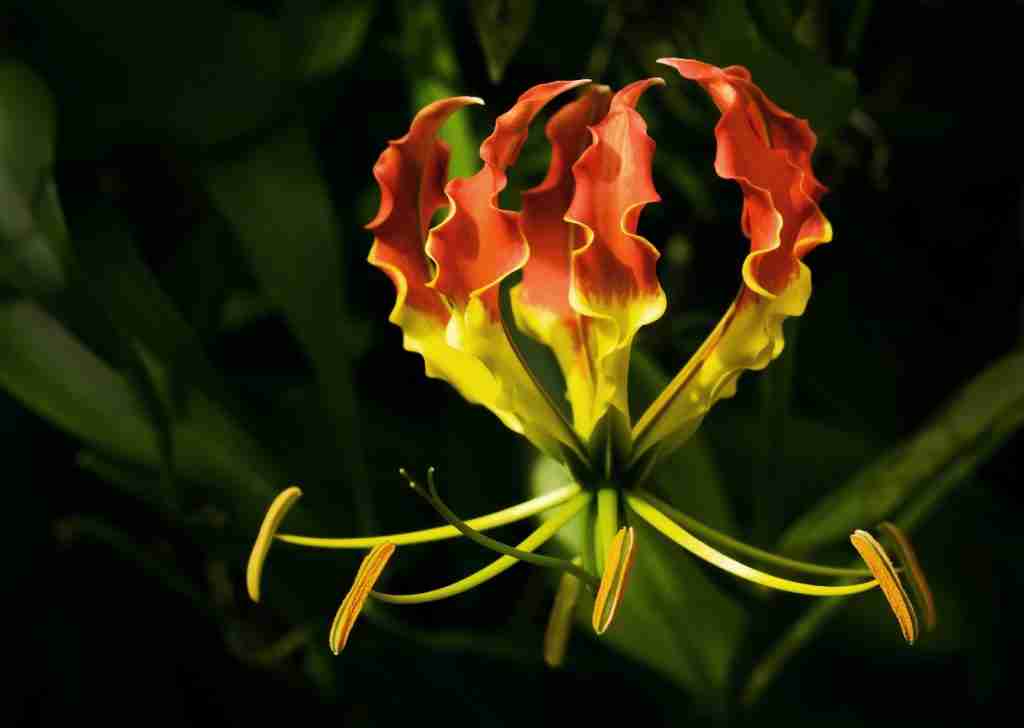
The national flower of Zimbabwe is the captivating Flame Lily, known for its vibrant red or orange petals.
The flower is not only an aesthetic symbol but also has medicinal properties, which signifies the country’s rich biodiversity and the deep connection of its people with nature.
21. Cricket, soccer, and rugby represent popular sports in Zimbabwe.
Zimbabweans share a profound passion for sports, with cricket, soccer, swimming, tennis, and rugby at the forefront.
These sports not only serve as popular pastimes but also as platforms for national pride, with the national cricket team participating in numerous international tournaments and the national soccer team, known as the Warriors, garnering substantial regional success.
22. Robert Mugabe, Zimbabwe’s first prime minister after independence, held the leadership for nearly four decades.
One of the fun facts about Zimbabwe is that Robert Mugabe, a figure of significant historical importance, was Zimbabwe’s first prime minister post-independence.
His leadership extended nearly four decades from 1980 to 2017, making him one of the longest-serving leaders in African history, a tenure marked by significant socio-political changes.
23. Zimbabwe numbers among the few African countries that have never experienced a military coup.
Zimbabwe stands among the select group of African countries that have never experienced a military coup, reflecting its enduring commitment to political stability and governance.
This unique status emphasizes the nation’s resilience and the strength of its democratic institutions in the face of challenges.
24. Zimbabweans have won several Olympic medals, mainly in field hockey and swimming.
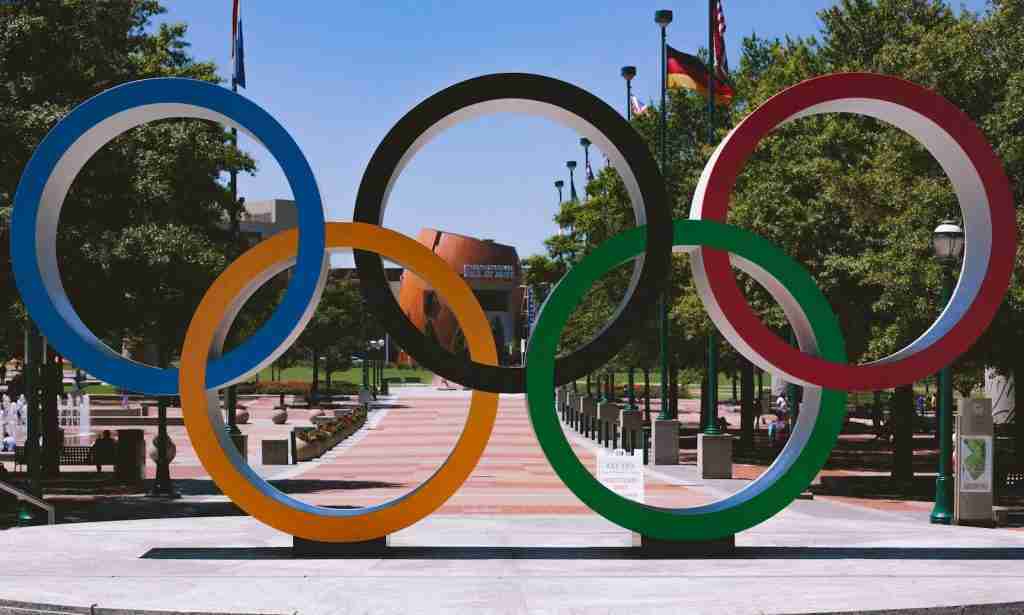
Zimbabwe’s sporting prowess extends beyond its borders, with Zimbabwean athletes bagging several Olympic medals, primarily in field hockey and swimming.
Notably, swimmer Kirsty Coventry brought home seven medals from 2004 to 2012, underlining Zimbabwe’s significant contributions to the world of sports.
25. Zimbabwe divides into 10 provinces.
Zimbabwe is organized into ten provinces, each offering a unique cultural and geographical landscape.
Together, they accommodate a population of approximately 15 million, fostering a rich diversity of traditions and lifestyles that contribute to the country’s vibrant social fabric.
26. Official languages in Zimbabwe are English, Shona, and Ndebele.
Zimbabwe boasts a remarkable linguistic diversity. The country recognizes English, Shona, and Ndebele as its official languages, facilitating communication and fostering unity, which is one of the fun facts about Zimbabwe.
Furthermore, the nation acknowledges 16 official languages, marking it as one of the most linguistically diverse countries worldwide. This linguistic richness underscores Zimbabwe’s respect for cultural diversity and inclusion.
FAQs
The Zimbabwe flag, adopted in 1980, is rich with symbolism. The green stripe represents agriculture, the yellow stands for the country’s mineral wealth, the red symbolizes the bloodshed during the struggle for independence, and the black denotes the native people of Zimbabwe. At the flag’s hoist side is a white triangle, signifying peace, and within it, a yellow Zimbabwe Bird, the national emblem, standing on a red star, symbolizing the country’s aspirations for social and economic progress.
Christianity is the main religion in Zimbabwe, with most of the population identifying as Christians. This includes a variety of denominations such as Roman Catholic, Anglican, and Methodist among others. There are also communities practicing indigenous religions, as well as a small percentage of people adhering to Islam, Hinduism, and other religions.
Zimbabwe is considered a lower-middle-income country by the World Bank. The country has a wealth of natural resources including minerals, fertile land, and wildlife. In 2019, the Gross Domestic Product (GDP) of Zimbabwe was approximately $21 billion, with a GDP per capita of around $1,464. It has faced significant economic challenges, such as hyperinflation and unemployment, which have impacted its overall wealth and economic stability.
Zimbabwe is best known for its stunning natural beauty and rich cultural heritage. It is home to Victoria Falls, one of the world’s largest and most spectacular waterfalls, and several UNESCO World Heritage Sites, including the historical ruins of Great Zimbabwe. The country is also recognized for its diverse wildlife, making it a popular destination for safari enthusiasts. Additionally, Zimbabwe has a high literacy rate, one of the highest in Africa.
Sadza, a type of maize meal porridge, is the most popular and staple food in Zimbabwe. It’s usually served with a variety of accompaniments such as vegetables, meat, or pickled fish. Other popular dishes include biltong (dried, cured meat), boerewors (a type of sausage), and dovi (a peanut butter stew). Zimbabwean cuisine is diverse and influenced by both local traditions and foreign cultures.

